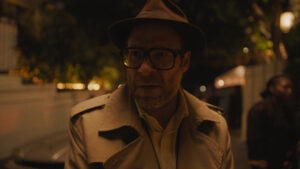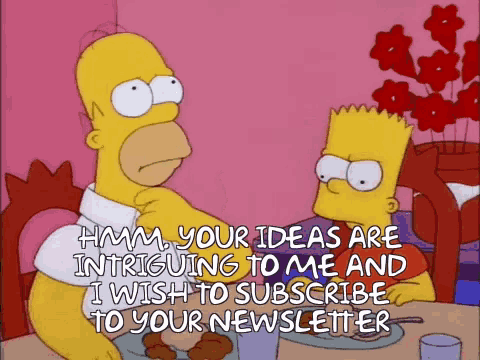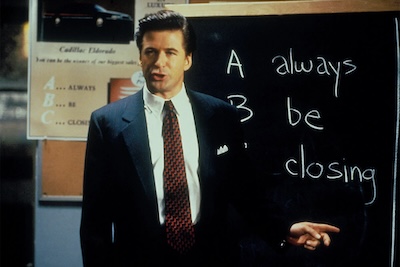As you laugh throughout Apple TV+’s stressful, sardonic, and fast-paced comedy series, The Studio, you cannot help but noticed how gorgeous it all is. It is one of the most confidently consistent new series on television, and it pays homage to the industry as much as it lovingly skewers it. That balance is also held together in the cinematography by Adam Newport-Berra. He blends together classic styles with an energized visual palette that makes The Studio all the more thrilling to watch.
Can cinematography lend itself to comedy? The age-old adage is that the medium is all about timing, but the camera also acts as conduit for the anxiety of a lot of money, jobs, and reputations on the line. Newport-Berra reveals that creating a first-hand account for the audience allows us to feel like we are part of the action.
“Seth [Rogen] and Adam [Goldberg] really wanted something that was reflective of the sort of anxiety, pressure, and panic that permeates our industry,” Newport-Berra says. “One really easy way to that was to create a really frenetic camera language that was just always on and was really intimate and visceral and first-person. It was a way for us, the creators as well as the audience, to feel like we were never off. Every actor had to be firing on all cylinders on every take, and if someone made a mistake, we had to go back to one. It made not just the final product special but how we made it as well.”
The way the camera swings back and forth during conversations and arguments makes you feel like you are watching a stressful tennis match. Ideas bounce back-and-forth, and you can’t back out of the room for a little bit of tension relief. You’re afraid that the characters are going to turn their attention towards you and you for some input.
“It puts everyone on the spot, and I love that it doesn’t give you a chance to ever step outside of the frame,” he says. “It’s important that it felt subjective just because telling stories about the industry can be kind of alienating and people have perspectives of what the industry is. We wanted to shatter those perspectives and we wanted to play with it. By making it as subjective as possible, you always felt like you were inside of it rather than peering in from the outside, which, I think makes it more personable and exciting.”
Episode two, “The Oner,” is a cinephile’s dream for how it references a filmmaking staple but also pulls off the impossible with its technical skill. There’s a beautifully amusing quality to how the episode references the oner baked inside a oner itself. A conversation about the oner will clearly lead to a debate over which example is “the best” of all time (I am partial to the slow scan of the beach in Joe Wright’s Atonement), but there is a lot more that goes into these shots than one might assume.

“Oners are rarely written on the page, and usually I’ll be going through a director and we’re be talking about a scene where we realize that we don’t want to cut,” he says. “Through the course of the discussion, we’ll talk about the best way to do it. Obviously, with episode two, that was the point of the episode, but normally it’s a natural evolution to decide that. We spent a lot of time walking through the script as much as we could on location, blocking it out, and trying to figure out the most interesting way to move through the space. A thing with oners that people don’t realize is that they can often become quite boring or static. There are some amazing oners in films that are just a static shot that are done incredibly well and you can lean into the performance. What we wanted to do, though, was keep it unraveling at all times in order to unfold the story.”
As we move in and out of spaces, you will come out with a deeper appreciation of how the camera moves. Clearly a proper path for the crew is incredible all throughout this season, and we see that echoed in other episodes when characters like Rogen’s Matt Remick can’t sit still. When we visit the Golden Globes, we are moving in and out of backstage and smaller spaces.
“Blocking is the most important part of our process and what we spent the most time on,” Newport-Berra says. “We always start by finding the movement that felt more natural for the actors, and after that we can add a bunch of stuff to make it more dynamic and keep the camera moving. There were times where there was enough natural block that the camera was struggling to keep up, and we were doing our best to ride the wave. But then there were times where we were in one room, and we wanted to make it more interesting. We would ask the actors to actually do things that they normally wouldn’t do in the scene to have them literally be on camera. Then we’d whip pan off to them to someone else, and we’d have to run around behind camera so that we would eventually link back up with them.”
We begin and end “The Oner” with a small piece of movie magic as the camera is mounted on the edge of Remick’s car. It may seem like a small bit of engineering, but it’s never lost on us how Newport-Berra flawlessly brings us into the narrative.

“There was an electromagnet mount on the car so the camera is on a stabilized gimbal that’s motorized,” he says. “The gimbal has a magnetized plate on it that is set onto the magnet, and you can turn it on and off with a switch. We were able to latch it one and then once the car stops, someone hits a switch so the magnet stops working so we can pull it off and carry it around and then the reverse happens at the end of the episode.”
When a reel of film goes missing on Olivia Wilde’s new detective film, the camera’s gaze trains in on a noir film of its own, but it does it in such a sleek, subtle way. The noir genre feels to integrated into the DNA of why people love Hollywood, and before you know it, Remick dons a trench coat and hat as he investigates his own case. The palette might be darker and the neons pop a little brighter, but it’s all in the world of The Studio.
“Originally, I think that’s something that Seth and Evan wanted to lean more into,” Newport-Berra says. “It ended u being less of a motif throughout the season, which is naturally what happens, but we were able to sneak that episode in. We didn’t have a lot of super specific references, but we all just knew we wanted to do something in that realm and work off the collective unconscious of what we understand noir to be. What helped keep the show consistent and maintain its singular style is just the strong choices we had made leading up to that point, and part of that is Julie Berghoff’s production design. At first, I didn’t know what Seth and Evan’s visual palette was going to be, but I was blown away by how intricate and beautiful the sets were, and I was totally terrified that we wouldn’t be able to rise up to that aesthetic level throughout the season.”
The Studio is streaming now on Apple TV+.









